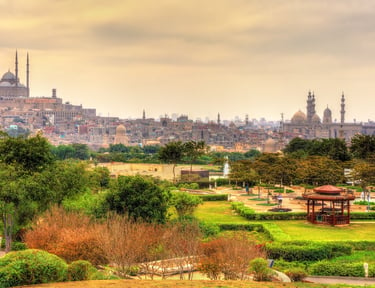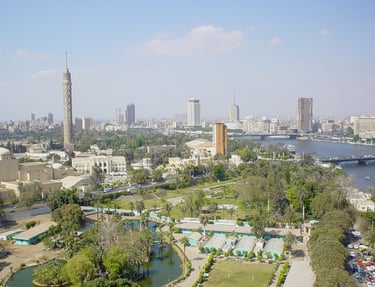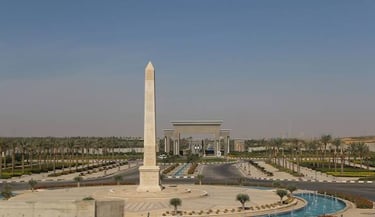Egyptian Cinema & Theatre السينما والمسرح فى مصر
تتمتع مصر بتاريخ طويل وثرى في مجالي السينما والمسرح، حيث بدأت السينما بعرض أول فيلم في عام 1896، وشهدت بدايات الإنتاج الفعلي في عام 1907 مع فيلم تسجيلي صامت. أما المسرح فقد بدأ بدوره كشكل من أشكال الترفيه والتعبير الثقافي والفني منذ قرون، وشهد تطورات كبيرة في القرن التاسع عشر، وخصوصًا بعد عام 1870، مع ظهور فرق مصرية
السينما المصرية
البدايات المبكرة:
بدأت السينما في مصر بعرض أول فيلم في الإسكندرية عام 1896، وشهد عام 1907 أول فيلم تسجيلي مصري.
الإنتاج الأول:
أول فيلمين روائيين مصريين شهيرين هما "قبلة في الصحراء" و"ليلى" في عام 1927.
السينما الناطقة:
أول فيلم مصري ناطق كان "أولاد الذوات" عام 1932.
العصر الذهبي:
تعتبر فترة الأربعينات من القرن العشرين هي "العصر الذهبي" للسينما المصرية، حيث تزايد الإنتاج بشكل كبير وتفوقت أرباحها على صناعة النسيج.
الإنتاج الحديث:
شهدت مصر إنشاء العديد من استوديوهات الإنتاج الهامة مثل استوديو مصر عام 1935، ومدينة الإنتاج الإعلامي، وقد أنتجت أكثر من 4000 فيلم، مما جعلها رائدة في السينما الأفريقية والعربية.
المسرح المصري
البدايات:
تعود جذور المسرح إلى العصور الفرعونية، وتطورت أشكاله عبر العصور. في القرن التاسع عشر، ظهرت فرق مسرحية
مصرية بارزة، مما ساهم في ازدهار المسرح المصري.
التطور التاريخي:
شهد المسرح المصري تحولات كبيرة، من المسرح الكوميدي والدرامي إلى المسرح الغنائي والاجتماعي.
المسرح المعاصر:
لا تزال مصر تشتهر بمسارحها الفنية والأدبية، والتي تقدم عروضًا متنوعة من الكلاسيكيات إلى الأعمال الحديثة.
منعطفات هامة:
القرن العشرين: شهد المسرح المصري صعود مسرحيين ومركبات مسرحية بارزة، مثل يوسف وهبي، كما شهد ظهور فرق مسرحية مهمة مثل "فرقة رمسيس".
التطورات الحديثة: شهدت مصر في أواخر القرن العشرين وأوائل القرن الحادي والعشرين تطوراً في أساليب الإنتاج، وتنوعاً في العروض، مثل العروض الكوميدية والموسيقية والدرامية.
خلاصة
تعتبر السينما والمسرح المصريين من أهم جوانب الثقافة المصرية وأكثرها تعبيراً، وقد شهدت تطوراً وتنوعاً على مر السنين. واليوم، لا يزال المشهد السينمائي والمسرحي المصري حيوياً، مع إنتاج مستمر لأعمال سينمائية ومسرحية جديدة، مما يؤكد على مكانة مصر كمركز ثقافي وفني هام في المنطقة
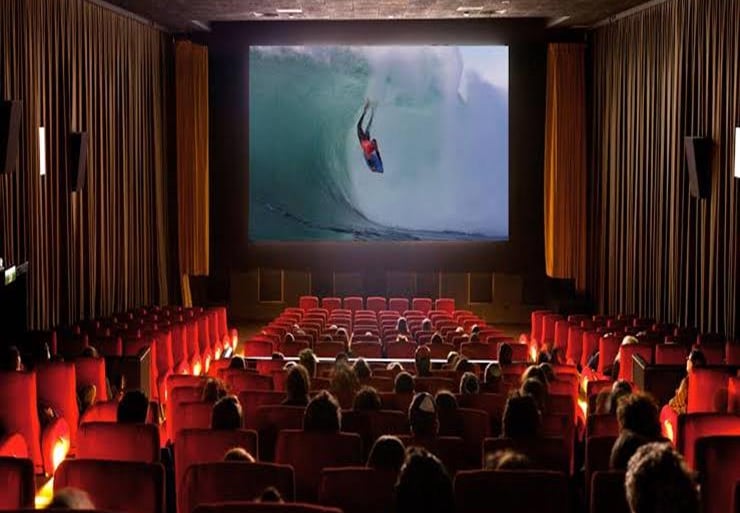

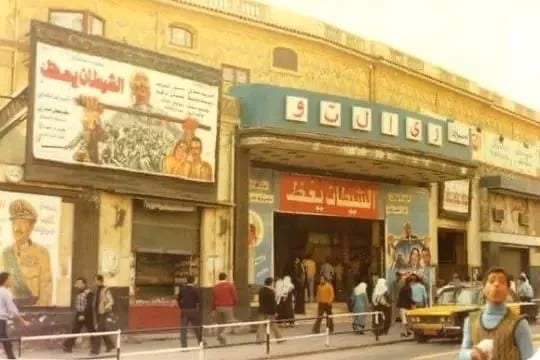

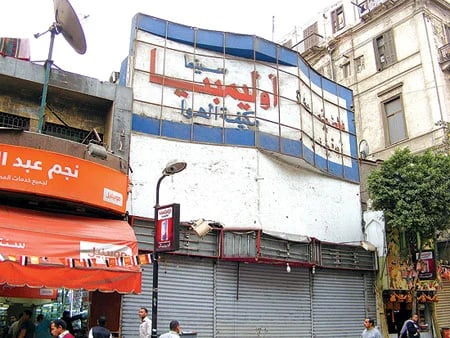

Egyptian cinema is the oldest and most influential film industry in Africa and the Arab world, with its hub in Cairo often dubbed the "Hollywood on the Nile". Egyptian theatre boasts ancient roots in religious drama and has evolved into a vibrant modern scene, particularly since the 20th century
Egyptian cinema
Early period and silent films (late 1890s–1930s)
The first film screening in Egypt occurred in Alexandria in January 1896, less than a year after the Lumière brothers' initial Paris showing.
Silent film production was modest during this period, with the first all-Egyptian-financed feature, Laila, appearing in 1927.
Key figures like Mohamed Bayoumi, who founded the first Egyptian studio in 1923, laid the groundwork for the industry.
The "Golden Age" (1940s–1960s)
This era is celebrated for its artistic innovation and prolific output, with Egypt at one point ranking third globally in film production.
Major studios like Studio Misr, founded by Talaat Harb in 1935, produced classics and developed the "star system" that launched the careers of icons like Omar Sharif and Faten Hamama.
Prominent genres included musicals featuring celebrated singers such as Umm Kulthum and romantic melodramas.
Filmmakers used their work to explore themes of social change, women's roles, and national identity.
Decline and transition (1960s–1990s)
President Gamal Abdel Nasser's government nationalized the film industry in the 1960s, which led to a drop in production and dynamism due to state control and censorship.
The 1970s saw a balance between political commentary and light entertainment, with films addressing social critiques of the Nasser era.
In the 1980s, a "Neo-Realism Movement" emerged with directors like Atef El Tayeb and Mohamed Khan, who focused on more serious, socially conscious cinema.
The 1990s were marked by commercial decline until the massive box-office success of the 1997 comedy Ismailia Rayeh Gayy revitalized the industry with a new generation of comedy stars.
Contemporary cinema (2000s–present)
Comedy and action films continue to perform well at the box office, but funding for smaller art-house and independent films remains scarce.
Independent cinema has gained international recognition at festivals, with films exploring diverse and contemporary themes.
Filmmakers are increasingly leveraging digital platforms and international collaborations to reach global audiences.
Egyptian theatre
Ancient roots and folk traditions
The earliest forms of Egyptian theatre can be traced to religious rites in the Pharaonic era, such as the yearly passion play reenacting the story of the god Osiris.
Traditional popular performances, including puppetry (Al Aragoz) and shadow plays, expressed political and social critiques through allegory and symbolism.
The European introduction and modernization (18th–19th centuries)
Modern dramatic theatre arrived in Egypt with the French campaign in 1789, followed by Khedive Ismail's establishment of the French Comedy Theatre and the Opera House in the late 1860s.
During this period, theatre was heavily influenced by European traditions, featuring court-style dramas and performances in French and Italian.
Nationalization and the Golden Age (early–mid 20th century)
The early 20th century marked a pivotal shift toward Egyptian-centric themes and Arabic-language performances.
Nationalist playwrights like Tawfik Al Hakim and Youssef Idris emerged, creating original works that reflected Egyptian society and politics.
This era produced iconic, celebrated plays such as Madraseit El Moshaghbeen (The School of Troublemakers, 1973).
Decline and revitalization (late 20th century–present)
The late 1970s saw a decline in Egyptian theatre due to shifting socio-economic policies that prioritized commercialism over the arts.
Since the 2011 revolution, a new wave of theatrical productions has emerged, often tackling politically and socially charged themes.
Contemporary theatre-makers are experimenting with new styles, such as integrating poetry, dance, and multimedia into their performances.
Festivals like the Downtown Contemporary Arts Festival (D-CAF) have helped revive the scene by attracting local and international talent
Contact IloveEgypt.com
© 2025. All rights reserved.
Mailing address
P.O. Box 690715
Orlando, FL 32869 USA



